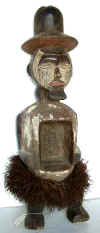 |
||||
 |
 |
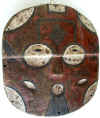 |
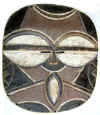 |
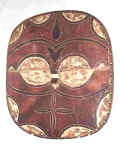 |
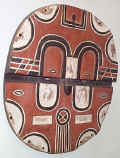 |
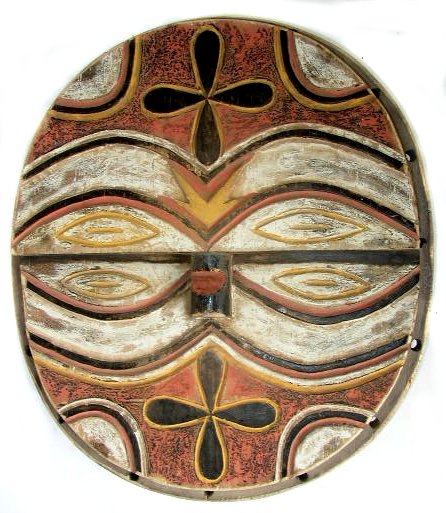 |
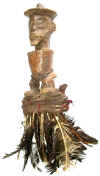 |
TRIBAL AFRICAN ART
TEKE (ANZIKA, BAKONO, BATEKE, M'TEKE, TEGE, TEO, TERE, TSIO)
Both Congo Republics and Gabon
The name of this people indicates its occupation—that is, trading—from teke, meaning “to buy.” The Teke settled in a territory lying across Republic of Congo, the Democratic Republic of the Congo and Gabon. During the 15th century they were integrated into the Tio kingdom, but attained independence in the 17th century. The basic social unit was the family, under the authority of the mfumu, or head of the family; the latter had the right of life and death over all family members and his prestige grew as their number grew – hence a tendency to own many slaves to increase one’s power and reputation. In terms of spiritual life, the mfumu mpugu, the village chief chosen as religious leader, was the most important personage; he kept the basket that contained the magic statuettes and the bones of the ancestors. The Teke often chose a blacksmith as chief – an important person in the community whose profession was passed down from father to son. The diviner, both sorcerer and healer, was also powerful; facilitating retributions, he would render effective the mussassi, personal protective statuettes, and would perform divination in instances of illness or death. The economy of the Teke is mainly based on farming maize, millet and tobacco, but the Teke are also hunters, skilled fishermen and traders. They believe in a supreme being, the creator of the universe called Nzambi, whose favors can be obtained with the help of tutelary spirits.
Teke artists carved fetish figures. Three elements are characteristic: a variety of headdresses, the presence of fine parallel scarifications on the cheeks, and the addition of fetish materials bonga either in an abdominal cavity or in a body-enveloping sack from which the head and feet protrude. Each figure has its own specific purpose not related directly to its appearance. For example, when a figure is carved for a newborn child, part of the placenta is placed in the stomach cavity of the figure while the rest is buried inside the father's hut (where the family's fetish figures are kept). The figure serves to protect the child until puberty. Figures of identical appearance serve also for success in hunting, trading, and other activities, each figure's purpose being known only to the owner. These figures protect and assist the Teke and, if a fetish figure successfully demonstrates its power, its owner may detach bonga, break it into several pieces and insert fragments into other figures. He will then sell new figures to neighboring families, leaving the original statue with an emaciated body. The statues with bonga are called butti; without bonga they are called tege. Often the magical substance is placed all around the body with a cloth. The arms and hands are highly conventionalized, carved in right angles at the elbows and shoulders, or missing altogether. The bonga is composed of various materials, but one of the main ingredients is whitish clay or chalk, which, for the Teke, represents the bones of their ancestor, thus conveying protective power. Often it is mixed with the nail clippings or the hair of a venerated person, with leaves of specific plants, various parts of snakes or leopards, etc. There are also statues with two faces and double legs; statues without the cavity, called nkiba; sitting figures with cavities.
The Teke used the moon-shaped masks -- flat, decorated with abstract geometric motifs, bisected by a horizontal stripe, colored with white or red earth, painted black, blue, and brown. They portray an abstractly interpreted human face. At the same time, the design is a composition of symbols. Teke masks are worn by members of the kidumu society either during the funerals of chiefs, or weddings, or important meetings.